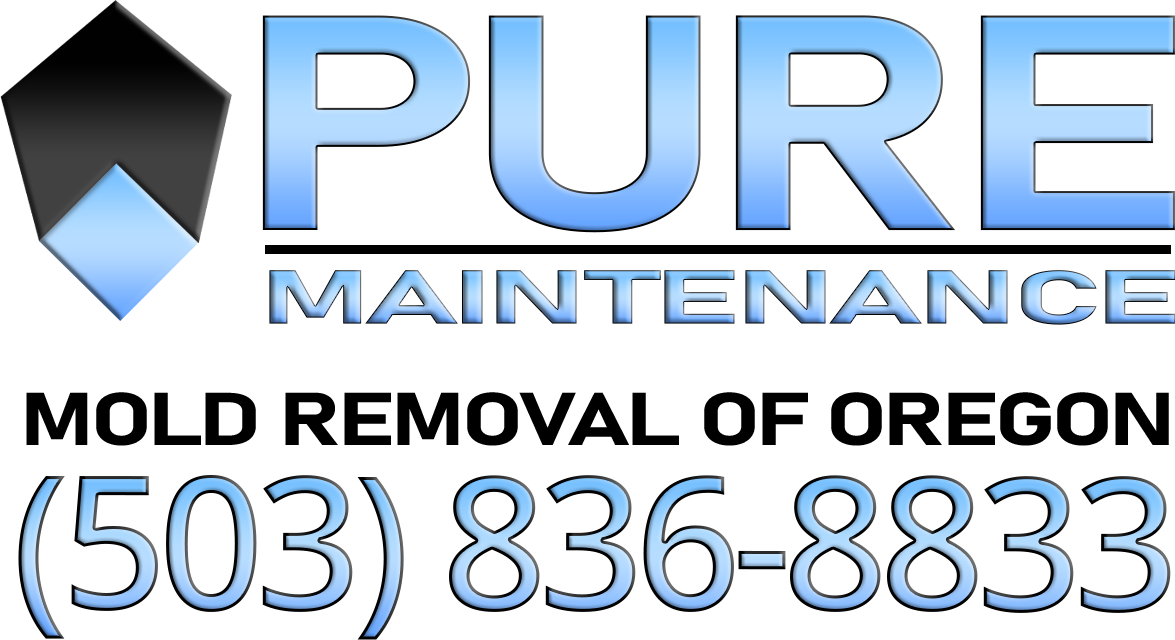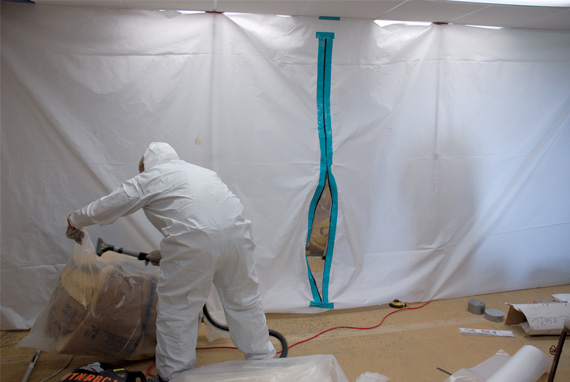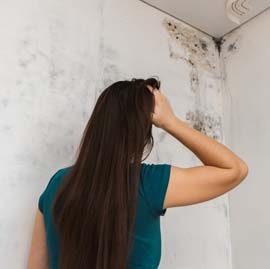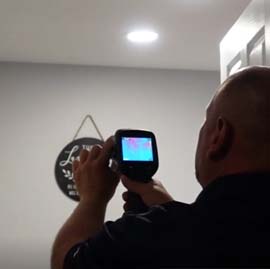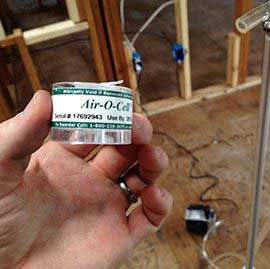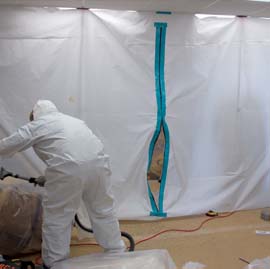Head Office in Portland Oregon
4949 S. Macadam Ave. #101 Portland, Oregon 97239
Request a Quote
Looking for a quality and affordable builder for your next project?

Call Us Today!
(503) 782-5200
Working Hours
We are happy to meet you during our working hours. Please make an appointment.
Mold Removal Tigard Beaverton Oregon : Tips and Techniques
Mold isn’t just a nuisance. It can be a serious health risk and damage the structural integrity of your house. Knowing the basics of mold removal is essential for ensuring an hygienic and safe living space. In this thorough guide, we’ll explore the details of mold removal and provide insight, strategies and strategies for prevention to ensure that your home is free of mold.
Table of Contents:
What is Mold and Why is it a Concern?
Identifying Common Mold Species
Health Risks that are Associated with Exposure to mold Exposure
Steps for Effective Mold Removal: A Comprehensive Approach
Safety Precautions and Protective Gear
Assessment and Inspection
Isolation of Contaminated Areas
Removal and Disposal of Mold-Infested Materials
Cleaning and Sanitizing Surfaces
Drying and Dehumidification
Verification and Post-Remediation Testing
DIY Mold Removing Vs. Professional Services
Preventing Mold Growth: Tips for Homeowners
Proper Ventilation
Effective Moisture Control
Regular Inspections
Humidity Regulation
Prompt Repairs
Common Mold Removal Myths Debunked
When to Seek Professional Help
Choosing the Right Mold Removal Company: Key Considerations
Certifications and Experience
Customer Reviews and Testimonials
Transparent Pricing and Services
Quality of Equipment and Techniques
Conclusion: A Mold-Free Home is Within Reach
Section 1: What is Mold and Why is it a Concern?
The mold, which is a form of fungus is a frequent but often overlooked intruder which can wreck havoc on indoor conditions. It is found everywhere and thrives in humid, damp conditions, which makes homes more susceptible to its development. The unwelcome guest reproduces via tiny spores transported by air flow, which settles on surfaces and growing under the appropriate conditions.
The appearance of mold varies, appearing as green, black or yellow spots on ceilings, walls and even in hidden areas like attics and crawlspaces. While some types of mold are safe but others be dangerous to health. This is why the presence of mold must never be overlooked.
The issue with mold is in the potential health risks it poses. Mold spores, that are not visible for the uninitiated may become airborne and then be inhaled by the occupants. For certain people, mold exposure may cause allergic reactions like coughing, sneezing and irritation to the skin. Other people might experience more serious symptoms, like eye watery eyes, congestion and asthma attacks.
It is scientifically referred to as Stachybotrys chartarum is well-known for its toxic qualities. Inhaling its mycotoxins may cause severe respiratory problems as well as neurological issues, and possibly an immune system suppression in people who are at risk.
Furthermore, mold can affect the structure of a structure in the course of time. It feeds off organic materials such as wood and drywall as well as fabrics which weaken them over time. This could compromise the strength of the structure of a home and lead to expensive repairs.
The problem is heightened when the growth of mold remains unnoticed or is not treated. It can grow within walls, beneath flooring, and in other places that are not visible and make it difficult to determine what is the severity of problem. This is why taking proactive steps are vital.
Preventing mold requires controlling indoor moisture levels. The areas that are prone to humidity, such as kitchens, bathrooms, and basements, need to be adequately ventilated. Resolving leaks and the issue of water intrusion quickly will prevent the growth of mold in these areas. The use of dehumidifiers will also help keep humidity levels in check.
Section 2: Identifying Common Mold Species
It is a widespread issue that can invade workplaces and homes, leading to health problems as well as damage to property. In order to effectively deal with mold issues it is important to be aware of the different types of mold that might be in the area.
1. Alternaria:
Most often, it is found in damp areas such as showers and under sinks The mold can appear as brown, green, or black. It may cause allergies or respiratory problems.
2. Aspergillus:
With more than 185 species Aspergillus can be present in the homes of. It is a variety of colors and may cause respiratory problems particularly in people who have weak immune systems.
3. Cladosporium:
The mold is characterized by the appearance of a powder and may be black, brown or even green. It thrives in hot and cold climates and could trigger asthma and allergies.
4. Penicillium:
Popular for its green or blue design, Penicillium can grow on surfaces like wallpaper, carpeting as well as insulation. It’s linked to respiratory infections and sinuses.
5. Stachybotrys:
It is often known as Black mold. This fungus thrives in damp and humid conditions. It creates mycotoxins which can cause serious health problems and respiratory issues.
6. Trichoderma:
With a greenish or white shade, Trichoderma thrives in damp places such as wallpaper and carpeting. It may cause respiratory problems as well as skin infections.
7. Fusarium:
This type of mold is diverse in color and is typically present in buildings with water damage. It can trigger allergies, skin inflammations, and in certain instances eye inflammations.
The identification of mold species isn’t easy, since they usually share common features. If you suspect that mold is growing you should consult experts on mold removal and inspection. They will be able to conduct tests to determine the kind of mold and take suitable remediation strategies.
To avoid the growth of mold to prevent mold growth, ensuring that the humidity of your indoors is at appropriate level (ideally at a range of 30% to 50 to 50%) is vital. Repairing leaks quickly, ensuring proper ventilation, and utilizing air purifiers may aid in creating an environment that is less favourable for mold growth.
Chapter 3: Health Hazards with the Exposure to Mold
Mold exposure can cause a wide range of negative effects on the health of a person, which is why it’s essential to know the dangers associated with mold infestations. Mold, which is a form of fungus that thrives in moist and humid conditions releases tiny spores in the air that can be breathed in or are brought into contact with skin. This article will provide a more detailed analysis of the health hazards that are associated with exposure to mold.
Respiratory Issues:
The spores of mold can trigger respiratory issues, mainly for those suffering from asthma or allergies. The spores inhalation can cause irritation to the airways, causing symptoms such as wheezing, coughing and breathlessness. Patients with respiratory issues that are pre-existing are more prone to developing symptoms after exposure to mold.
Allergic Reactions:
Exposure to mold can trigger allergic reactions in a few people. Some symptoms include sneezing nasal stuffiness or runny noses eye itchy or watery as well as skin itching. The reactions occur by the immune system recognizes mold spores as dangerous substances.
Aggravation of Asthma:
For those suffering from asthma, exposure to mold may cause more harm to their asthma. Inhaling mold spores may cause inflammation to the airways and cause asthma symptoms to increase. The presence of severe mold can cause asthma to develop for people who were unaffected by the condition.
Mycotoxins:
Certain molds create mycotoxins which are toxic substances that may cause severe negative health consequences. Mycotoxins are often found on the surfaces of mold spores as well as mold fragments. In the event of prolonged exposure to mycotoxins whether through ingestion, inhalation or through skin contact may result in various health problems such as neurological symptoms along with the immune system suppression.
Skin Irritation:
Indirect contact to mold or spores may cause itching and rashes on the skin, particularly in those who have sensitive skin. Abrasions to the area affected can cause more irritation and can result in secondary infections.
Sinus Infections:
Exposure to mold can lead to chronic sinus infection and sinusitis. The spores may settle into the sinuses and nasal passages that can lead to congestion and inflammation.
Compromised Immune System:
Patients with weak immune systems, for example patients undergoing chemotherapy or organ transplants are at greater likelihood of experiencing adverse health effects caused by exposure to mold. Mold can trigger an invasive fungal infection that is hard to cure and can even cause death.
To reduce the dangers to health posed by mold exposure, it’s crucial to tackle mold issues quickly and efficiently. Expert removal and remediation of mold will help to eliminate the cause of the issue and provide the safety of your home. Regular maintenance and adequate ventilation also aid in the prevention of mold growth and related health risks.
Section 4: Steps for Effective Mold Removal: A Comprehensive Approach
Removal of mold is an essential process that ensures the safety and health of your indoor environment. It is essential to have a comprehensive plan to eliminate mold effectively and avoid its reoccurrence. Here’s a step-bystep guide to getting rid of mold successfully.
1. Inspection and Assessment:
Start by determining the severity of the infestation. Examine all areas that are susceptible to damp, like bathrooms, basements, and kitchens. A certified mold inspector will conduct a thorough inspection and ensure that there are no moldy pockets missed.
2. Containment:
To stop mold spores from spreading to areas that are not affected to prevent them from spreading, build containment barriers with tape and plastic sheets. The contaminated area should be sealed off to ensure that there is no cross-contamination in removal.
3. Protective Gear:
Before you begin the process of removal, make sure you’re wearing appropriate protection equipment, such as masks, gloves goggles, goggles and disposable coveralls to avoid the direct contact with mold and spores.
4. Moisture Control:
Find the root cause of the growth of mold The root of the problem is usually excessive humidity. Repair leaks, increase ventilation and regulate the humidity levels to prevent the growth of mold.
5. Removal:
Take the materials that are contaminated with mold such as insulation, drywall, or carpets. Utilize the correct methods to limit the spread of mold spores into air. Put all the materials in bags that are sealed for disposal.
6. Cleaning:
Make sure to thoroughly clean the area with antimicrobial treatments to kill any the remaining mold spores. Scrub surfaces to ensure that there are no trace of mold left in the area. It’s important to wash the surrounding areas in order to avoid spreading mold.
7. Drying:
Dry the area thoroughly to stop the growth of mold. Utilize dehumidifiers and fan to make sure that the surface is completely dry prior to moving on.
8. Disposal:
Remove mold-infested items in accordance with local guidelines. Double-bag the items in heavy-duty plastic bags, and label the bags as mold-infested.
9. Prevention:
After mold removal is complete Take preventive measures to prevent future outbreaks. Check and maintain regularly areas susceptible to moisture. ensure adequate ventilation and fix leaks as soon as they occur.
10. Restoration:
In the end, restore the area back to its original state. Reinstall any materials that have been removed and ensure adequate ventilation and insulation to stop the growth of mold in the future.
Be aware that while smaller spots of mold can be wiped out by homeowners but larger or more severe problems require expert service for removal of mold. Mold removal experts have the knowledge, expertise and expertise to deal with large-scale mold issues and make sure your home is free from any health hazards.
Section 5 DIY Mold Removal in comparison to. Professional Services
In homes, the growth of mold is a major concern, and can cause structural and health hazards. When confronted with a mold problem, homeowners often debate whether to tackle the problem on their own or employ professionals to remove the mold. Both have advantages However, understanding the difference will help you make an informed choice.
DIY Mold Removing: Do-it-yourself mold elimination could be a great option for tiny, isolated patches of mold. When the area affected is not more than 10 square feet, and you have no health issues it is possible to try to eliminate the mold yourself. The most basic steps include wearing protective equipment, scrubbing the affected area with solutions for removal of mold and making sure that the area is properly ventilated both during and after cleaning. It is important to keep in mind that inadvertent DIY removal can result in an increase in mold growth and health risk. In addition, if you don’t address the root causes of development of mold and mildew, the problem might come back.
Expert Mold Removal In the case of more extensive or significant mold problems, it’s usually recommended to employ experts to remove the mold. Professionals who are certified have the experience and tools to determine the severity of the mold issue accurately. They can locate the hidden mold pockets, make sure of that the right amount of containment is in place to avoid cross-contamination and then implement complete removal methods. The professionals do not just remove visible mold, but also deal with the underlying issue of moisture to stop future expansion. They also prioritize security by utilizing the most advanced equipment, making sure that they clean thoroughly and utilizing specific drying techniques.
Factors to Take into Account: When deciding between the two options of professional and DIY removal of mold, think about the following aspects:
Dimensions and extent Lesser areas of mold growth might be handled with DIY methods but larger areas usually require professional assistance.
Health-related Concerns: Individuals with allergies or asthma, as well as those with compromised immune systems should consider professional assistance to reduce risk to their health.
Know-how: Professionals possess the required experience and training to manage mold removal in a safe and efficient manner.
LONG-TERM RESOURCES: Professionals not only eliminate mold, but also identify the sources of moisture to avoid the occurrence of.
Time and effort: DIY methods can be costly and may not produce the desired results if they are not executed correctly.
In the end, DIY mold removal can be effective for small instances however professional mold removal services provide the most comprehensive and efficient solution, particularly for larger or extensive problems. While DIY strategies may save the cost initially, improper removal could have expensive consequences later on. Make sure you are thorough, safe and long-term preventive measures by seeking out professional help in the event of major mold problems in your home.
Section 6: Preventing Mold Growth: Tips for Homeowners
In homes, mold growth can be aesthetically unattractive and dangerous to your health. But, taking preventive steps can greatly reduce the likelihood of having mold infested homes. Here are some crucial suggestions for homeowners to ensure that their homes free of mold:
1. Maintain proper ventilation: Proper ventilation is crucial to stop the growth of mold. Be sure that areas prone to moisture, like bathrooms, kitchens, or basements, have adequate ventilation systems. Utilize exhaust fans and wide windows to let air fresh air circulation and get rid of any excess moisture.
2. Control Humidity levels Control Humidity Levels: Mold thrives in humid conditions. Maintain indoor humidity between 30 or 50% in order to deter the growth of mold. Utilize dehumidifiers when needed especially in basements or other places in which humidity is excessive.
3. Make repairs immediately Fix Leaks Fast: Even small leaks can result in mold growth as time passes. Check your home regularly for leaks in roofs, pipes windows, appliances, and pipes. Make any leaks right away to stop the accumulation of moisture.
4. Improve the circulation of air A proper air circulation can help maintain the levels of moisture. Avoid placing furniture right against walls, as this could hinder airflow and create zones of stagnant air that can encourage mold to flourish.
5. Utilize products that are mold-resistant: If you’re renovating or building, go for materials and paints. These are products designed to ward off moisture and deter growth of mold, which makes the best choice to avoid mold.
6. Clean and dry water-damaged areas If your house suffers water damage due to floods, leaks or even spills, it’s important to dry and clean the affected areas quickly. Mold growth can begin within 24-48 hours of exposure to water.
7. Clean and maintain regularly Regularly cleaning and maintenance can stop the accumulation of dust, organic matter, and dirt which mold thrives on. Pay attention to areas susceptible to moisture, for example kitchens and bathrooms. Make sure you regularly clean and dry tiled showers, curtains for bathroom and sinks to stop the growth of mold.
8. Utilize exhaust fans In bathrooms, exhaust fans and kitchens can help remove excessive moisture out of the air when showering, cooking, as well as washing dishes. Check that these fans are operating properly and utilize them when needed.
9. Maintain Gutters Clean: Dirty gutters could cause water overflow that can get into the foundations and walls of your house. Clean and maintain your gutters regularly to avoid the damage caused by water and mold development.
10. Control indoor plants Indoor plants are a contributing factor to the indoor humidity levels. While they can be visually pleasing, be sure that their presence does not lead to an excessive amount of moisture within your home.
If you take these preventive steps, homeowners can create an environment that is unsuitable for mold development. Regular maintenance periodic inspections and timely actions can go a great way to safeguarding your home from the threat of mold.
Section 7: Common Mold Removal Myths Debunked
The topic of mold removal is frequently tainted with misconceptions, resulting in confusion and health hazards. Let’s dispel some of the most commonly-held myths about mold removal so that homeowners have the right information and can make educated decisions.
Myth 1 Bleach kills Mold Incompletely Though bleach may temporarily get rid of mold on surfaces, it isn’t able to deal with the root cause. The roots of mold can penetrate through porous materials, and bleach isn’t able to completely eliminate the roots. Professional mold elimination involves identifying and eliminating the cause of the problem.
Myth #2: Homemade solutions are adequate: There’s a misconception that DIY solutions like baking soda or vinegar, are effective in eliminating mold. Although these products can remove the surface mold, they will not be able to stop it from coming back. Professional mold removal involves an accurate identification, proper containment and thorough removal in order to stop repeat occurrences.
Myth3: Minimal amounts of mold are harmless: No amount of mold is considered to be harmless. Mold produces spores which can influence the indoor air quality and can cause health problems even in tiny amounts. Neglecting or minimizing the growth of mold can lead to a more serious issue over time.
Myth #4: Painting over Mold conceals it: Painting over mold does not eliminate the issue but it masks it temporarily. It is possible for mold to continue to develop under the paint, which can lead to more serious issues later on. A proper mold removal procedure involves thorough drying, cleaning, and disinfecting prior to any painting is even thought of.
Myth5: Cleaning once removes the mold permanently: Removal of mold is a continuous process because spores naturally exist in the air. Regular maintenance as well as preventative measures are essential to stop mold from recurring. Professional mold removal concentrates on eliminating the underlying cause to limit the possibility of growth in the future.
Myth 6. Mold Removal is only suitable for visible mold It can also thrive in unnoticed areas such as behind walls or underneath flooring. Even if you aren’t able to see the mold, its presence could be spotted by a musty smell or health issues. Professional mold removal involves comprehensive inspections to find all affected regions.
Myth7: How to Remove Mold is safe for DIY: Mold removal can release mold spores into air which could cause health problems. A proper set of protective gear, a safe environment and disposal techniques are essential for ensuring safety during removal of mold. Professionals are trained and have tools to manage the removal of mold in a safe manner.
Myth 8. Mold is only an issue for cosmetics: Mold not only causes damage to surfaces, but it can also be a serious health risk. The presence of mold spores may result in respiratory problems as well as other health issues. It is crucial to remove mold quickly to ensure the health of your indoor environment.
In order to effectively tackle mold concerns it is crucial to differentiate facts from fiction. Engaging professionals who are experts in the removal of mold ensures the issue is addressed thoroughly and in a safe manner. By dispelling these myths, homeowners can take proactive steps to protect their homes and their health from the dangers caused by mold growth.
Section 8: When to Seek Professional Help
The discovery of mold within your home may be alarming, bringing up concerns about the potential for health hazards as well as property damages. Although minor issues with mold may be handled with DIY strategies but there are some instances that require professional assistance is essential to ensure your safety and the security of your home’s living space.
1. Extensive Growth of Mold: If the growth of mold covers an area greater that 10 square feet and extends over multiple rooms, expert intervention is suggested. A large amount of growth suggests a more serious issue that needs an expert evaluation and treatment.
2. Health Signs and Symptoms: If any of you or family members suffer from chronic health issues like allergies, coughing and sneezing or respiratory issues, it is possible that mold may be the cause. An expert mold assessment will determine if mold is responsible for the health issues you are experiencing and recommend the correct remediation steps.
3. The hidden Mold: Mold can thrive in the most obscure places, such as in the walls, beneath flooring or in ceiling spaces. If you suspect the presence of hidden mold as a result of a strong scent or a mysterious leak in the water experts are able to perform thorough inspections and utilize special equipment to pinpoint and fix the issue.
4. Structural Damage: The presence of mold can cause structural damage to your house through the breakdown of organic substances. If you observe evidence of structural damage like sagging ceilings or walls that have sagging Mold removal by a professional is necessary to stop further damage.
5. Contaminated HVAC Systems If mold has gotten into your heating, ventilation, or air conditioning (HVAC) system and spreads spores throughout your home anytime the system is in operation. Experts in mold removal can effectively cleanse and clean HVAC systems to avoid cross-contamination.
6. Flooding: Every event with a significant amount of water damage, like a burst or flooding pipes, could result in the growth of mold. Even if you’ve dried out the area, the possibility remains that mold will appear in corners that aren’t visible. Experts can determine the severity of the damage and suggest steps to repair the situation.
7. Individuals with compromised immune systems: If anyone within your home has weak immune system like young children, the elderly or those suffering from chronic diseases, it’s best to stay clear of DIY elimination of mold. Experts are trained to manage mold removal in a safe manner and minimize the risk of health-related complications.
8. In the event that you’ve experienced repeated growth of mold, if you’ve tried DIY mold removal in the past, but the mold is always resurfacing is a sign that the root of the issue isn’t being addressed properly. Experts can pinpoint the root of the problem and then implement efficient solutions.
If you are unsure you’re not sure, consult professionals for mold removal advice. They are equipped with the knowledge of the tools and know-how to assess the situation, formulate an effective remediation plan and ensure that your home is not contaminated by mold and health risks. The use of a professional service will not only guarantee the security of your living space, but also gives confidence that the work is completed perfectly on the first try.
Section 9: Choosing the Right Mold Removal Company: Key Considerations
Finding a reliable mold removal service involves assessing the company’s certifications, their experience, customer feedback, transparency of pricing, the quality of equipment and the removal methods.
Section 10: Conclusion: A Mold-Free Home is Within Reach
With the right knowledge, preventive strategies, and expert guidance, having an unmold-free home is possible. If you focus on controlling moisture along with prompt and a skilled approach, homeowners can create a secure and healthy living space for their family members and themselves.
In this article we’ve reviewed the essentials in mold remediation, health hazards prevention, and the importance of selecting the best professionals. If you follow these tips it is possible to have that your home is free of mold and have peace of mind.
- Water Damage Restoration
- Attic Mold Removal
- Dry Fogging Technology
- HVAC/Ductwork Mold Removal
- Crawl Space Mold Removal
- Black Mold Removal
- Bathroom Mold Removal
- Allergy Mold Testing
- Drywall Mold Removal
- Demolition-Free Process
Our Latest Specials
Any Dry Fogging Treatment!
What Our Clients Say!
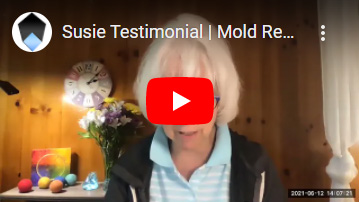
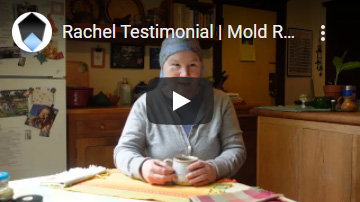
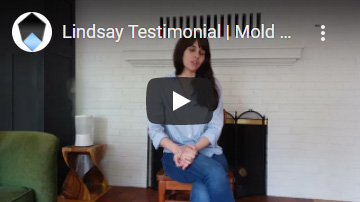
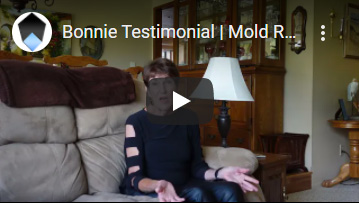
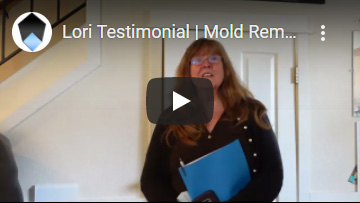
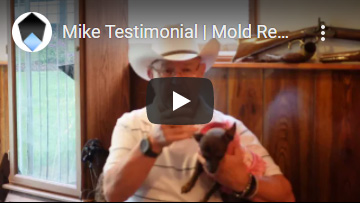
What Our Clients Say!
Leading The Way In Mold Removal & Remediation!
© [current_date format=’Y’] Enter Keyword Here – Pure Maintenance Portland. – Privacy Policy | Terms
